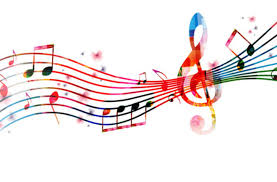Introduction to Pulsamento
Pulsamento is a musical technique that has its roots in Latin American music, particularly in the genres of salsa and samba. It refers to the rhythmic pulsation or beat that serves as the foundation for these styles of music.
In essence, pulsamento is what keeps the music moving forward and gives it its infectious energy. It acts as a guide for both the musicians and dancers, creating a cohesive and dynamic rhythm that everyone can follow.
Originating in Cuba during the early 20th century, pulsamento was originally used in traditional Afro-Cuban drumming ensembles such as rumba and son. As these musical styles began to evolve into modern-day salsa, pulsamento became an integral part of its sound and remains so to this day.
Pulsamento is also commonly found in Brazilian samba music, another popular genre with deep African influences. In fact, many experts believe that the use of pulsamento in Brazil can be traced back to West African rhythms brought over by slaves during colonial times.
How Does Pulsamento Work?
At its core, pulsamento is based on a steady four-beat pattern known as “clave” which serves as its foundation. This pattern consists of two bars or measures with three beats each followed by one bar with two beats.
History of Pulsamento
Pulsamento is a relatively new music genre that blends elements of electronic, Latin, and traditional folk music. Its roots can be traced back to the late 20th century in South America. In this section, we will explore the history and evolution of Pulsamento, from its humble beginnings to its growing popularity on an international level.
Origins
The origins of Pulsamento can be traced back to the early 1980s when a group of musicians from Argentina started experimenting with blending traditional folk rhythms with modern electronic beats. These musicians were inspired by other emerging genres such as electronic tango and electro-cumbia.
One of the pioneers of Pulsamento was Gustavo Santaolalla, a musician and composer from Argentina. In 1984, he formed a band called Arco Iris which incorporated synthesizers into their traditional Andean folk music, thus creating a unique sound that would later influence the development of Pulsamento.
Evolution
In the following decade, Pulsamento started gaining more recognition as it evolved and incorporated elements from different musical genres such as salsa, reggae, and rock. This fusion resulted in an energetic danceable sound that appealed to younger generations.
Influenced by other popular artists like Manu Chao and Molotov in Mexico during the late 1990s, Pulsamento continued to evolve with diverse influences from punk-rock and hip-hop music.
How Pulsamento Works
Pulsamento is a unique and innovative approach to music production that combines traditional techniques with modern technology. Developed by renowned producer and musician, Juan Luis Lagos, Pulsamento offers a new way of creating high-quality beats and melodies for any genre of music.
So, how exactly does Pulsamento work? Let’s take a closer look at the key elements of this game-changing method.
1) Pattern-Based Composition:
At its core, Pulsamento is based on patterns. These patterns are short musical phrases or sequences that can be easily combined and modified to create complex rhythms and melodies. This approach makes it easier for both beginners and experienced producers to create engaging and dynamic compositions without getting bogged down by technicalities.
2) Organic Sound Library:
Another unique aspect of Pulsamento is its use of organic sound samples. Unlike many other beat-making programs that rely heavily on pre-recorded electronic sounds, Pulsamento utilizes real instrument recordings to provide a more natural and authentic sound. This library includes a wide range of instruments such as acoustic drums, percussion, guitars, basses, pianos, strings, and more.
3) Features That Enhance Creativity:
Pulsamento comes equipped with several features that aid in unleashing your creativity as a producer. One such feature is the “Fills” function which allows users to add fills (short drum rolls or variations) at specific points in their composition to keep the beat interesting. The “Humanize” function adds subtle variations in timing and
Benefits of Practicing Pulsamento
Pulsamento is a technique used in music, specifically in guitar playing, which involves pulsing or striking the strings with the fingertips. This technique has been used for centuries and has many benefits for guitarists both beginners and advanced players. In this section, we will explore some of the key benefits of practicing pulsamento.
- Improves Rhythm and Timing
One of the primary benefits of practicing pulsamento is that it helps to develop a sense of rhythm and timing. As you strike the strings at regular intervals, you are essentially keeping a beat with your fingers. This can greatly improve your overall rhythmic skills and help you better understand different rhythms within music.
- Increases Finger Dexterity
Pulsamento requires precise finger movements, making it an excellent exercise for developing dexterity in the fingers. By regularly practicing this technique, guitarists can improve their ability to move quickly and accurately between notes on different strings.
- Enhances Control and Precision
Since pulsamento involves striking specific strings on the guitar with varying levels of intensity, it can greatly enhance a guitarist’s control over their instrument. With practice, you can learn how to control the volume and tone produced by each string with just your fingertips.
- Adds Expression to Playing
The subtle variations in volume produced by using pulsamento also add an expressive element to guitar playing. It allows for more dynamic contrast within songs, making them sound more interesting and captivating to listeners.
Techniques and Movements in Pulsamento
Pulsamento is a fundamental aspect of flamenco guitar playing, characterized by a rhythmic pulsing or tapping motion created with the right hand fingers. It is an essential technique for creating the distinct and fiery flamenco sound, and is used in both solo and accompanying roles.
There are several techniques and movements involved in producing pulsamento on the guitar. Let’s take a closer look at each of them:
- Strumming:
Strumming involves brushing or flicking the fingers across all six strings of the guitar simultaneously, creating a full and percussive sound. This technique is commonly used in flamenco to mimic the sound of castanets or to emphasize strong rhythmic accents. - Rasgueado:
Rasgueado (meaning “strummed” in Spanish) involves striking individual strings with four fingers in quick succession to create a rapid strumming effect. This technique requires speed, precision, and control to execute properly. - Picado:
Picado (meaning “to pick” in Spanish) involves using the fingertips to pluck individual strings rapidly, creating a fast-paced and intricate melody. It is commonly used in falsetas (solo sections) of flamenco songs. - Golpe:
Golpe (meaning “hit” in Spanish) refers to various percussion techniques employed by flamenco guitarists to produce percussive sounds on their instrument. This can include tapping on different parts of the guitar body such as the top plate, sides
Common Misconceptions about Pulsamento
Pulsamento is a highly popular dance style that originated in Cuba. In recent years, it has gained widespread recognition and has become a favorite among many dancers and enthusiasts around the world. However, with its rising popularity, there are also many misconceptions about this dance form. In this section, we will address some of the common misconceptions surrounding Pulsamento.
Misconception 1: Pulsamento is just another name for salsa or bachata.
Many people often mistake Pulsamento for being just another genre of salsa or bachata. While these three dances may have some similarities in terms of their Latin American roots and music styles, they are distinct and unique dance forms on their own. Pulsamento has its own set of basic steps, rhythms, and movements that make it stand out from other dances. It also incorporates elements from other traditional Cuban dances like son, mambo, and cha-cha-cha.
Misconception 2: Only Latinos can do Pulsamento well.
Another common misconception about Pulsamento is that only those with Latin American heritage can perform it correctly. This belief stems from the assumption that since Pulsamento originated in Cuba, only those with a Latino background can truly understand the essence of the dance. However, this is not true as anyone can learn and excel at Pulsamento regardless of their ethnicity or cultural background. All it takes is dedication to learning the techniques and movements of this dance form.
Incorporating Pulsamento into Your Daily Routine
Incorporating Pulsamento into your daily routine can bring numerous benefits to your life, from improved physical health to increased mindfulness and relaxation. Here are some tips for seamlessly integrating Pulsamento into your daily routine:
- Start the Day with a Morning Pulsamento Session: As soon as you wake up, take a few minutes to practice Pulsamento. This will help you set an intention for the day and prepare your mind and body for any challenges ahead.
- Take Short Breaks Throughout the Day: Instead of scrolling through social media or browsing the internet during breaks, try incorporating short 5-10 minute Pulsamento sessions throughout your day. Not only will this give you a mental break from work or other tasks, but it will also help improve circulation and release tension in your muscles.
- Incorporate Pulsamento into Your Exercise Routine: Whether you’re an avid runner, weightlifter, or prefer more low-impact exercises like yoga or Pilates, adding a few minutes of Pulsamento before or after your workout can significantly enhance its effects on both your mind and body.
- Practice Mindful Eating with Pulsamento: Instead of multitasking while eating, try practicing Pulsamento while enjoying your meals. This involves savoring each bite slowly, paying attention to the flavors and textures of the food, and being fully present in the moment.
Frequently Asked Questions about Pulsamento
- What is Pulsamento?
Pulsamento is a form of dance and musical expression that originated in Argentina and Uruguay. It combines elements of tango, milonga, and candombe with a focus on rhythmic steps and movements to create an energetic and dynamic style.
- How did Pulsamento originate?
Pulsamento emerged in the 1920s as a fusion of various cultural influences in the Rio de la Plata region of Argentina and Uruguay. Initially called “milonga con tranco corto” or “short step milonga,” it evolved over time into the more complex and expressive style we know today as Pulsamento.
- Is Pulsamento only danced to tango music?
While tango music is often associated with Pulsamento, dancers also incorporate other types of music such as candombe, salsa, jazz, and electronic beats into their routines. This allows for more versatility and creativity in the dance.
- Do I need a partner to do Pulsamento?
No, you do not need a partner to practice or perform Pulsamento. While it can be done as a couple similar to traditional tango, it can also be danced solo or in groups known as rondas (circles).
Conclusion: The Power of Pulsamento
Pulsamento is a powerful technique that can greatly enhance one’s musical expression and performance. Through its distinct rhythmic and percussive nature, pulsamento can add depth, emotion, and intensity to music, making it an invaluable tool for musicians of all levels.
In this article, we have explored the origins and definition of pulsamento, its various applications in different styles of music, and the technical elements involved in mastering this technique. But why exactly is pulsamento so important and how can it benefit musicians?
Firstly, pulsamento allows for more dynamic expression in music. By incorporating varying degrees of force in each stroke or pluck on the instrument, a player can create a greater range of volumes and intensities that add texture and flavor to their playing. This is particularly beneficial when performing solo pieces or duets where there are no other instruments to fill in these dynamic gaps.
 Lifeyet News Lifeyet News
Lifeyet News Lifeyet News





